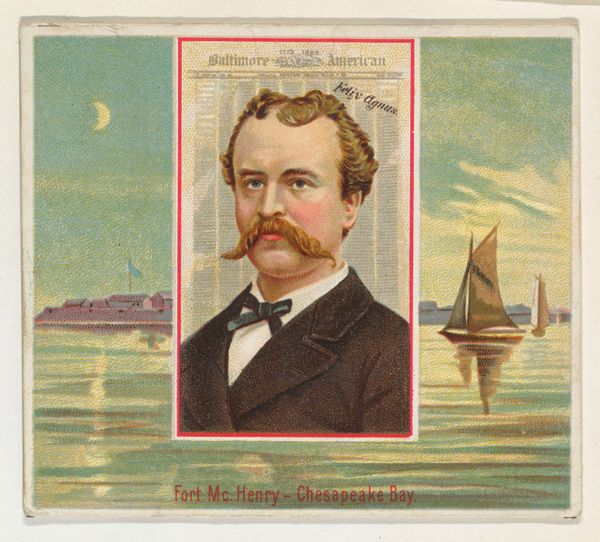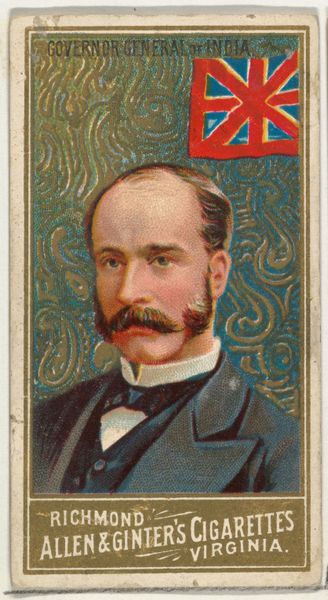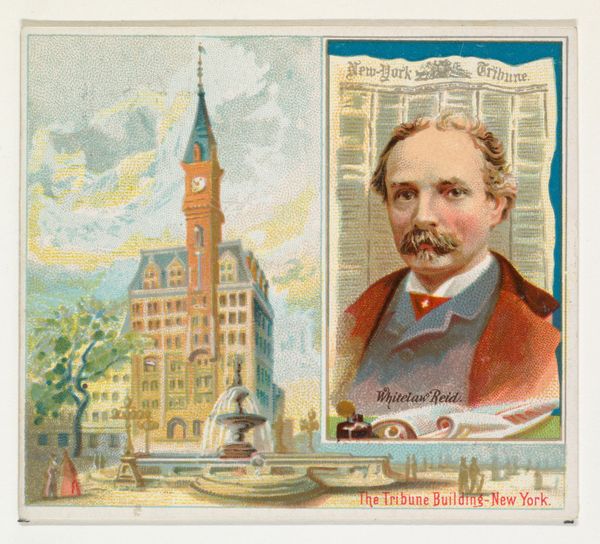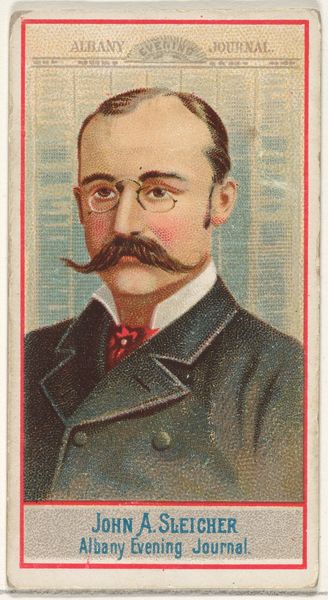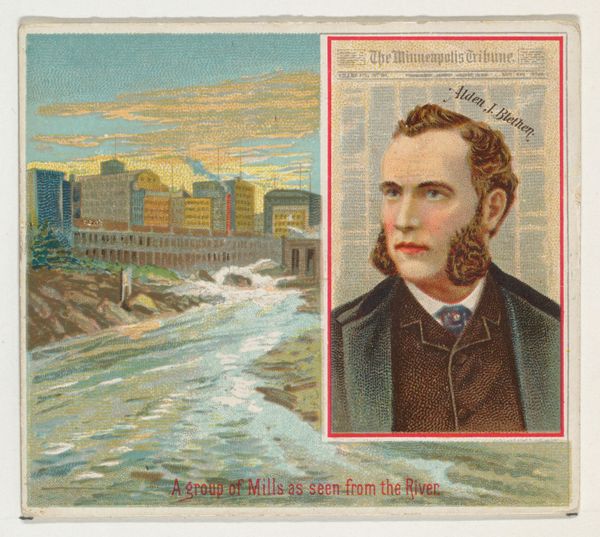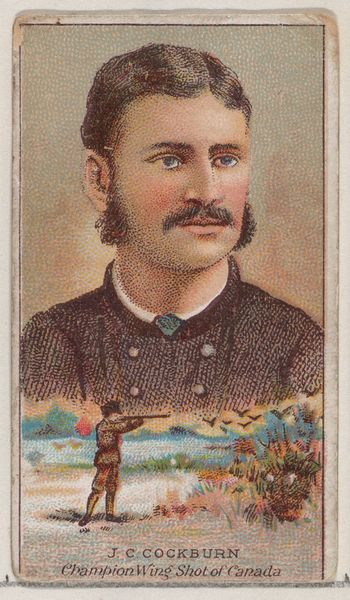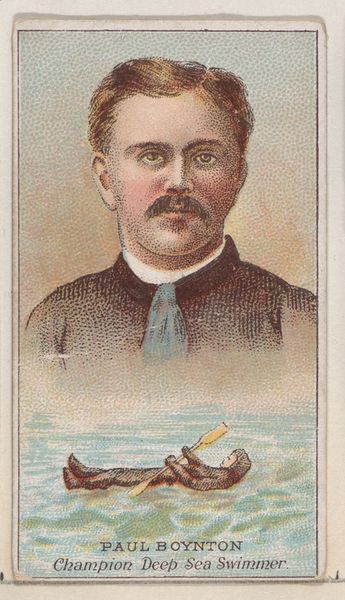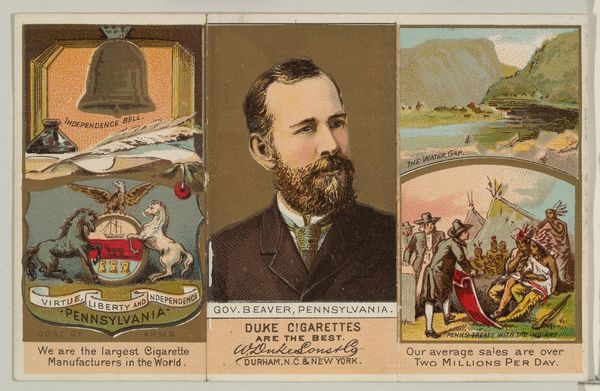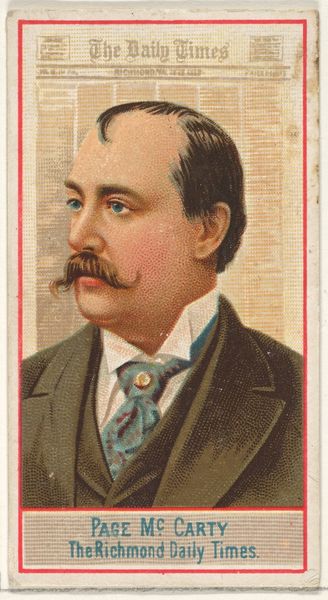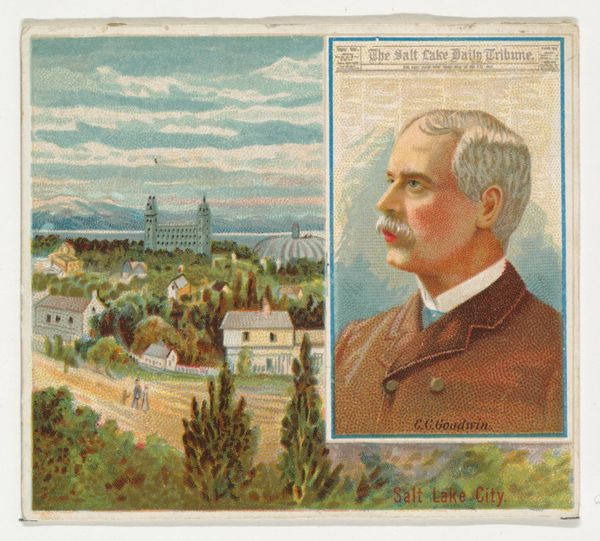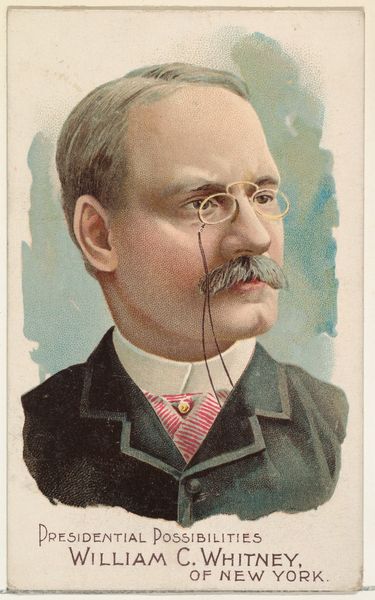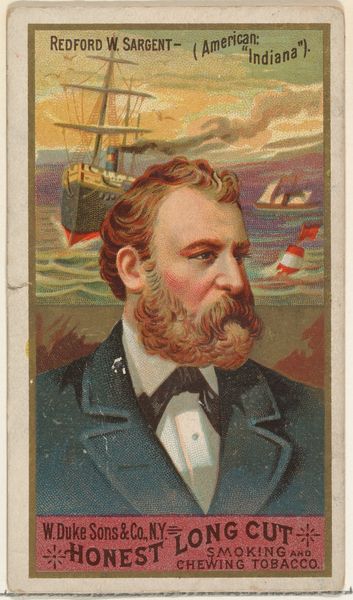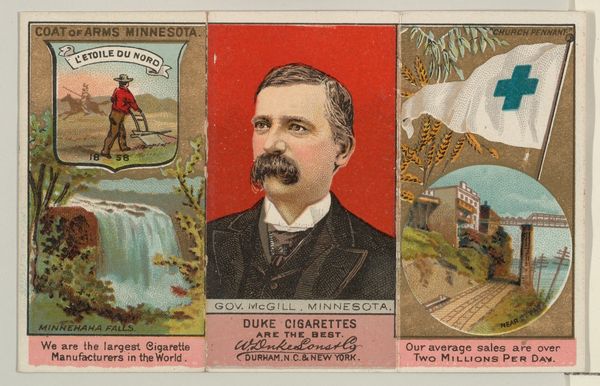
John A. Sleicher, Albany Evening Journal, from the American Editors series (N35) for Allen & Ginter Cigarettes 1887
0:00
0:00
drawing, graphic-art, print
#
portrait
#
drawing
#
graphic-art
#
boat
# print
#
impressionism
#
men
#
cityscape
Dimensions: Sheet: 2 7/8 x 3 1/4 in. (7.3 x 8.3 cm)
Copyright: Public Domain
Curator: Here we have "John A. Sleicher, Albany Evening Journal, from the American Editors series (N35) for Allen & Ginter Cigarettes," a colorful print dating back to 1887. It’s currently held at the Metropolitan Museum of Art. Editor: My initial reaction is that it feels… bifurcated. You have this very romantic, almost impressionistic cityscape on the left and then a very formal portrait on the right. It’s an interesting juxtaposition. Curator: It certainly is. This piece is from a series commissioned by Allen & Ginter, a cigarette company, to feature prominent figures. These cards were included in cigarette packs, primarily to stiffen the packaging and advertise, becoming hugely popular collectibles. Editor: Ah, so the inherent capitalist intent! How interesting. I'm curious about the choice of imagery surrounding Sleicher. The city presented looks idyllic, perhaps romanticized given its ties to industry and labour. Curator: Indeed. Sleicher was the editor of the Albany Evening Journal, a very influential paper at the time. His portrayal aligns with a broader phenomenon of the era: celebrating powerful figures as symbols of progress. The image to the left presents Albany’s skyline with boats moving gracefully along the water, really reflecting a vision of prosperous city life. Editor: A vision perhaps curated for consumption? Thinking about power structures and media representation, how complicit were figures like Sleicher in constructing and maintaining a potentially skewed narrative for the public? The city becomes an extension of his own personal brand in that respect. Curator: The image certainly plays into that. It emphasizes Sleicher’s importance by associating him with a thriving city. Newspapers, after all, held a crucial position in shaping public discourse, mediating and interpreting urban development for citizens. Editor: I'm drawn to the visual separation—Sleicher framed against his own newspaper. It seems less a celebration of civic duty and more an exercise of self-promotion. It reminds me how media ownership today still shapes societal viewpoints and controls access to diverse perspectives. Curator: That’s a salient point. By appreciating it in its full context, we can observe how images reflect societal values while potentially concealing underlying socio-political factors. Editor: Precisely. This cigarette card gives us a surprisingly nuanced look at the intersections of commerce, power, and media. Curator: Absolutely, prompting deeper questions about image construction and dissemination in 19th-century America.
Comments
No comments
Be the first to comment and join the conversation on the ultimate creative platform.
